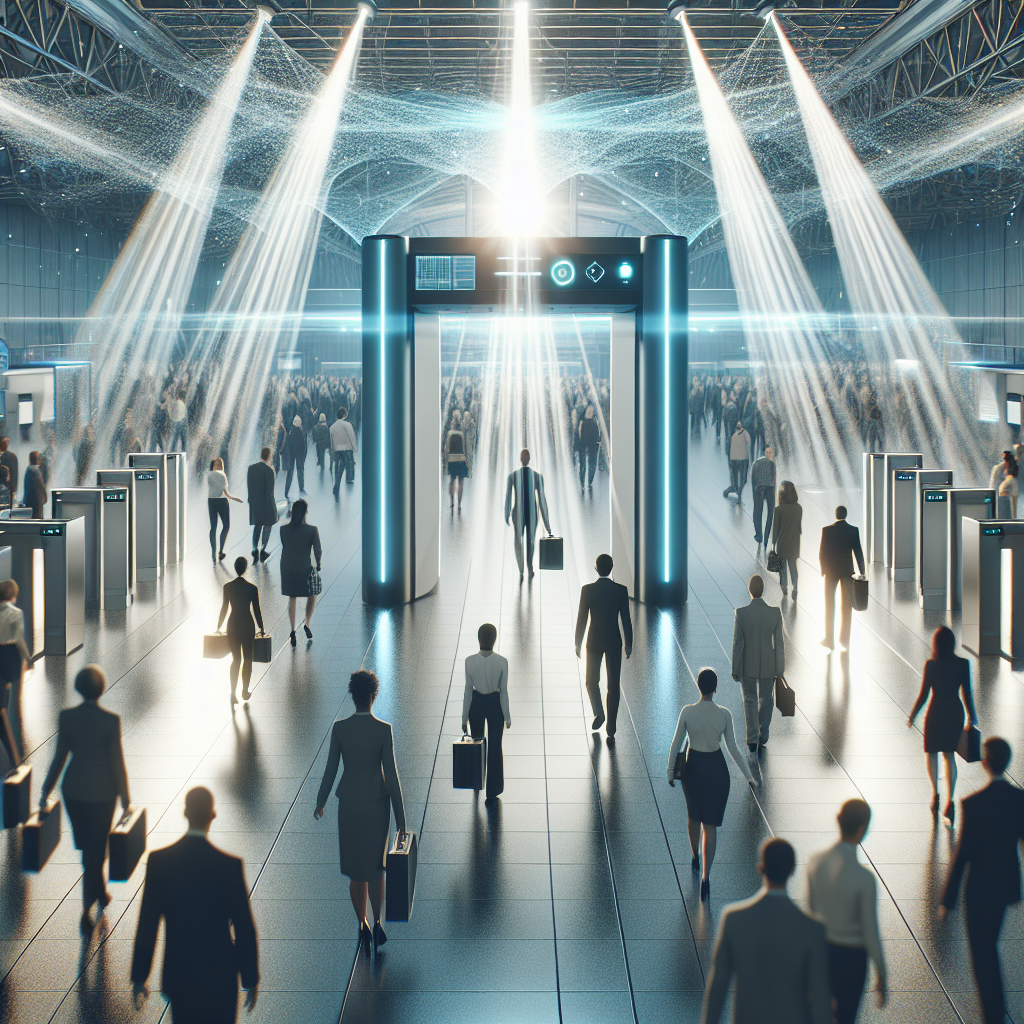
Introduction
In a world where security concerns loom large, the phrase "safety first" has never held more weight. Traditional methods of security screening, particularly metal detectors, have served us well over the decades. However, as threats evolve and technology rapidly advances, the demand for more sophisticated and efficient security strategies is paramount. Beyond the Metal Detector: The Future of Security Screening Technology explores innovative solutions that promise to reshape the landscape of security measures in various industries—from airports to event venues to corporate offices.
Imagine walking through a security checkpoint without having to pause, remove your belongings, or endure invasive scans. The future of security screening can make this dream a reality, offering enhanced safety without compromising convenience. In this article, we will delve deep into emerging technologies, examine real-world applications, and identify the transformative potential that lies beyond traditional metal detectors.
The Limitations of Traditional Metal Detection
To understand Beyond the Metal Detector: The Future of Security Screening Technology, it’s crucial to first address the limitations of existing practices.
1. Surface Level Detection
Metal detectors work primarily on the principle of electromagnetic fields, detecting the metallic content in objects. While they are effective in various scenarios, they don’t provide comprehensive security. They cannot identify non-metallic threats such as explosives or other harmful items.
2. Time-Consuming Processes
Many security scenarios require individuals to empty their bags, pass through multiple checkpoints, and stand in long lines—a significant inconvenience that can deter attendance at events or create friction in travel experiences.
3. Limited Contextual Awareness
Current metal detectors lack the capability to assess the context surrounding an individual. Situations can be misjudged, leading to false alarms or missed threats. It’s a reactive system instead of a proactive one.
The Shift Towards Advanced Screening Technologies
Recognizing these limitations, researchers, and developers are innovating solutions that provide enhanced detection capabilities and improve user experience. Here’s a look at some of the most promising alternatives extending beyond the metal detector.
1. 3D Imaging
3D imaging technology is already making waves in major airports worldwide. This advanced system scans baggage in three dimensions, allowing security personnel to view the contents from multiple angles.
Case Study: London Heathrow Airport
London Heathrow has implemented advanced 3D imaging technology, speeding up the baggage screening process and significantly reducing false alarms. The result? A more efficient security line that keeps passengers moving.
2. Millimeter Wave Scanners
Millimeter wave technology uses high-frequency radio waves to create detailed images of body outlines and detect concealed objects without physical contact. Unlike metal detectors, these machines can identify a broader range of threats, including non-metallic weapons.
Case Study: TSA Implementation
In the United States, the Transportation Security Administration (TSA) has rolled out millimeter wave scanners across numerous airports. These devices have effectively reduced TSA’s reliance on traditional metal detectors by detecting contraband that previous generations of technology couldn’t reveal.
3. Artificial Intelligence and Machine Learning
Artificial Intelligence (AI) is driving transformative changes in security screening. By analyzing patterns in data, AI can help security systems become more intuitive. Machine learning algorithms enable systems to learn from each event, improving accuracy and reducing false positives over time.
Case Study: Smart Surveillance Systems
Airports in Singapore have introduced smart surveillance systems that use AI to monitor behavior and detect anomalous activities. This advanced technology represents a growing trend toward pre-emptive security solutions that assess risks dynamically.
Workflow Efficiency and User Convenience
Emerging technologies promise not only enhanced security but also improved user experiences, creating a streamlined interface where people feel safe and respected. Here are key areas where Beyond the Metal Detector: The Future of Security Screening Technology can shine.
1. Contactless Screening Options
Contactless technologies are expanding, with solutions like facial recognition systems taking center stage. In regions like Asia, these technologies are increasingly utilized to improve travel efficiency and reduce person-to-person contact.
2. Automated Threat Detection
Integrating automated solutions allows for quicker identification of potential threats while minimizing human error. Systems can automatically alert personnel to unusual movements or behaviors, enhancing situational awareness.
3. User-Friendly Checkpoints
Innovations have led to more intuitive checkpoints, incorporating innovative designs and technologies that encourage smooth flow. This minimizes crowding and enhances user experiences through efficient structural layouts.
| Technology | Advantages | Examples |
|---|---|---|
| 3D Imaging | Comprehensive understanding of contents | Heathrow Airport |
| Millimeter Wave Scanners | Non-intrusive detection capabilities | TSA checkpoints |
| AI & Machine Learning | Enhanced accuracy and adaptability | Singapore surveillance systems |
Real-World Applications
The advancements summarized above have opened new avenues for security protocols in various sectors. Let’s explore sectors where these technologies are making a significant impact.
1. Aviation Security
The aviation industry has long been the forefront of security innovation due to the high stakes involved. Airports worldwide are increasingly adopting advanced screening technologies, from 3D baggage scanners to AI-driven monitoring systems.
Case Study: Dubai International Airport
Dubai International Airport has continuously invested in cutting-edge technologies, including facial recognition and biometric systems, dramatically enhancing passenger processing efficiency while maintaining crucial security measures.
2. Mass Gatherings and Events
Sports arenas, concerts, and conventions are prime targets for potential security threats. The future of security screening in these environments includes smart metal detectors and automated screening systems that dynamically assess crowd behavior.
Case Study: Coachella Music Festival
The Coachella Music Festival has redefined its security measures by incorporating advanced scanning technologies, which not only improve safety but also allow for a more seamless and enjoyable attendee experience, focusing on “fun” rather than “friction”.
3. Retail Environments
In retail, the stakes are equally high for protecting both assets and consumers. Automated threat detection solutions are paving the way for enhanced in-store security, allowing staff to focus on customer service rather than managing security alerts.
Case Study: Walmart
Walmart has begun implementing AI-driven surveillance systems across stores to reduce shoplifting while ensuring customer satisfaction. This technology allows for the quick identification and neutralization of potential threats without compromising the shopping experience.
The Future Landscape of Security Screening
As we look ahead, several societal trends are likely to influence the evolution of security screening technologies.
1. Increasing Privacy Concerns
With technological advancements come ethical considerations. Privacy issues must be addressed, particularly regarding facial recognition and data retention policies. Manufacturers of new screening technologies must balance security needs with the protection of individual rights.
2. Global Standardization of Practices
As threats become increasingly complex, international cooperation and standardization of security practices will become more important. Countries must share knowledge and best practices efficiently to promote global security.
3. Emphasis on Cybersecurity
As we integrate technology into physical security measures, the risks associated with cybersecurity must also be acknowledged. Protecting data and ensuring that security systems themselves aren’t vulnerable to attack will be critical.
Conclusion
Beyond the Metal Detector: The Future of Security Screening Technology is not just about replacing an outdated model; it’s about revolutionizing how we think about safety and convenience. The innovations we’ve discussed will ultimately allow us to enjoy a secure environment without sacrificing the fluidity and ease we expect in our daily lives. As we embrace these advancements, the journey towards an efficient, user-friendly, and comprehensive security system can empower us to build a safer future.
Employing technology will demand collaboration and commitment, but as we’ve seen through various case studies, the potential rewards are immense—reshaping not just security protocols, but also human experiences.
FAQs
1. What are some current alternatives to metal detectors for security screening?
Alternatives include 3D imaging systems, millimeter wave scanners, and AI-driven surveillance solutions that can detect a wider range of threats.
2. How do 3D imaging scanners improve security processes?
3D imaging allows for better visualization of baggage contents, reducing false alarms and speeding up the screening process.
3. Are there privacy concerns associated with advanced security screening technologies?
Yes, particularly with technologies like facial recognition, which raises ethical questions around personal data use and retention.
4. What role does AI play in modern security screening?
AI enhances accuracy, reduces false positives, and learns from patterns, helping security systems respond proactively to potential threats.
5. Will traditional metal detectors be phased out completely?
Not necessarily. While they may become less prevalent, they are likely to coexist with advanced technologies, serving specific purposes in certain environments.
The future of security screening is not only promising but essential. Join the conversation, share your viewpoints, and explore how we can collectively build a safer environment that encourages convenience, efficiency, and peace of mind.

















